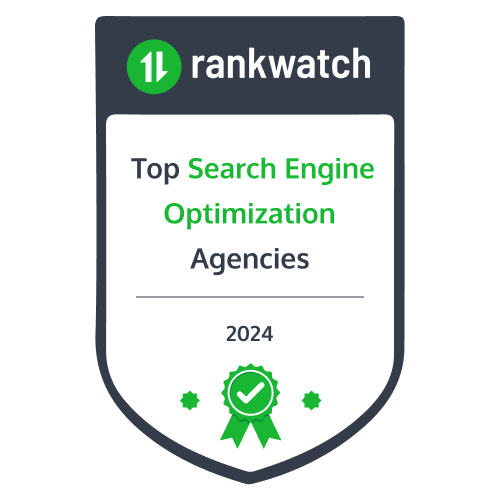Understanding and Utilizing Google Analytics for SEO
Image source: Freepik
Google Analytics reveals what’s working—and what’s not—on your website. It shows how visitors find you, what they do on your site, and where you can make improvements. This guide goes beyond the basics, helping you turn data into decisions that bring more visitors and keep them engaged. Ready to uncover new ways to improve your SEO? Let’s dive in.
What Is Google Analytics?
Google Analytics is a powerful tool that helps you track and understand your website’s performance. It provides valuable insights into how users interact with your site. By using Google Analytics, you can see which pages attract the most visitors, how long they stay, and what actions they take. These Google Analytics benefits are vital for improving your site’s design and content.
You’ll also want to pay attention to data privacy concerns when using this tool. Google Analytics collects user data, so it’s important to guarantee you’re compliant with privacy regulations. Transparency with your users about how you use their data builds trust and can enhance user engagement.
To boost user engagement strategies, analyze the data Google Analytics provides. You can identify trends, such as which content keeps visitors engaged or what drives them away. This information allows you to adjust your strategies and create a better experience for your audience.
Setting Up Google Analytics
To start leveraging the insights from Google Analytics, you first need to set it up on your website.
Begin with account creation. Go to the Google Analytics homepage and sign in with your Google account. If you don’t have one, you’ll need to create it first. Once you’re signed in, click on the “Start for free” button to create a new account.
Next, you’ll need to set up a property for your website. Fill in your website’s name, URL, and other details. After this, Google will provide you with a unique tracking code. This code is vital because it collects data from your site.
You’ll need to copy this code and paste it into the header section of your website.
Ensure you’re mindful of data privacy. Familiarize yourself with the privacy policies and regulations applicable in your region. It’s important to inform your visitors about data collection and usage.
Once all this is done, you’re ready to start tracking your website’s performance with Google Analytics. Now, you can gain valuable insights to enhance your SEO strategy effectively.
Navigating the Dashboard
When you first open the Google Analytics dashboard, it can feel overwhelming. The user interface is packed with data and options. But don’t worry, you can navigate it easily with a little practice.
Start by familiarizing yourself with the layout. You’ll notice a sidebar on the left, which helps you access different sections.
Dashboard customization is essential. You can tailor the dashboard to show the metrics that matter most for your SEO efforts. Click on the “Customization” tab to create your own dashboards. This way, you can focus on what you need without getting lost in the data.
Explore the various reports available. Each report offers a different view of your site’s performance. You can easily perform metric comparisons to see how your website is doing over time or against competitors.
Don’t forget to use the search bar at the top to quickly find specific reports. With practice, you’ll learn to navigate the dashboard like a pro.
The more you explore, the better you’ll understand your website’s performance and how to improve it for SEO.
Understanding Key Metrics
Image source: Freepik
Understanding key metrics is essential for optimizing your SEO strategy. These metrics help you gauge your website’s performance and effectiveness. Key performance indicators (KPIs) are the most significant metrics to track. They show you how well your SEO efforts are working.
Start by looking at organic traffic. This tells you how many visitors come from search engines. Then, consider bounce rate. A high bounce rate might mean your content isn’t engaging enough. You should also check conversion rate. This metric shows how many visitors take action on your site.
Use metric comparison to evaluate your progress over time. Compare your current metrics to past performance. This helps you see trends and identify areas for improvement.
Data interpretation techniques are vital here. Break down the numbers to understand what they mean. Look for patterns in user behavior. Are certain pages performing better? Knowing this can guide your content strategy.
Tracking Organic Traffic
Tracking organic traffic is a key part of measuring your SEO success. It helps you understand how well your website attracts visitors from search engines.
To start, you can use Google Analytics to see which organic keywords bring users to your site. This organic keywords analysis will show you which terms are effective for your audience.Do a traffic source comparison. This lets you see how much traffic comes from organic search versus other sources, like social media or paid ads. By comparing these sources, you can spot trends and adjust your strategy accordingly.
Another important metric to watch is your bounce rate. This tells you how many visitors leave your site after viewing just one page. High bounce rate implications can indicate that your content isn’t engaging enough or that it doesn’t match what users are searching for.
Analyzing User Behavior
Analyzing user behavior is essential for optimizing your SEO efforts. It helps you understand how visitors interact with your site. Start by using behavior flow analysis. This tool shows the path users take as they navigate your site. You can see where they drop off and where they engage more.
Fcus on user journey mapping. This involves outlining each step a visitor takes, from their first interaction to the final action. By mapping this journey, you can identify pain points and areas for improvement. For instance, if users frequently exit on a specific page, it may need a content update or a clearer call to action.
Finally, implement user engagement strategies. These can include improving your site’s speed, enhancing content quality, or simplifying navigation. Engaged users are more likely to stay on your site longer and explore more pages.
Setting Goals and Conversions
Setting goals and conversions is essential for measuring the success of your SEO efforts. When you set clear goals, you define what success looks like for your website. You can use goal alignment strategies to guarantee your SEO objectives match your business goals. This helps you focus on what truly matters. Think about conversion funnel optimization. This process helps you guide users from their first visit to completing a desired action, like making a purchase or signing up for a newsletter. By understanding each step of the funnel, you can identify where users drop off and make necessary adjustments.
Employ performance tracking techniques to measure your progress. Google Analytics offers tools that let you see how well your goals are performing. By regularly reviewing this data, you can spot trends and make informed decisions.
Using Segmentation for Insight
Segmentation in Google Analytics helps you gain deeper insights into your website’s performance. By using segmentation strategies, you can break down your data into meaningful groups. This allows you to focus on specific audience demographics, such as age, location, or device type.
When you analyze these segments, you’ll discover patterns in behavior analysis. For instance, you might find that younger users spend more time on certain pages than older ones. This insight is powerful. It helps you tailor your content and marketing efforts to meet the needs of different groups.
You can also create segments based on user actions. For example, you can analyze users who completed a goal versus those who didn’t. This helps you understand what drives conversions. Using segmentation effectively can guide your SEO strategies. You can identify which keywords attract different audience segments and adjust your content accordingly.
In short, segmentation allows you to see your website data more clearly. You can make data-driven decisions that lead to better engagement and higher conversions. Don’t overlook this valuable feature in Google Analytics. It’s key to revealing your website’s full potential.
Reporting and Data Visualization
Effective reporting and data visualization in Google Analytics can transform how you interpret your website’s performance. By utilizing visual reporting, you can quickly spot trends and patterns that might go unnoticed in raw data. Charts and graphs make complex information easier to understand, helping you make informed decisions.
You can enhance your data storytelling by customizing your dashboards. Tailoring your reports to highlight the metrics that matter most to you allows for a clearer picture of your SEO efforts. You can choose which data points to emphasize, whether it’s traffic sources, user behavior, or conversion rates.
Don’t forget to utilize Google Analytics’ ability to share dashboards with your team. This fosters collaboration and guarantees everyone’s on the same page.
Visual reports can spark discussions, leading to innovative strategies for improvement.
Integrating Google Search Console
Image source: Freepik
Integrating Google Search Console with Google Analytics can considerably enhance your SEO insights. This integration allows you to access valuable data that helps improve your website’s performance. You can see how your site ranks in search results and which keywords drive traffic.
One of the key Search Console benefits is tracking your performance metrics. You can view click-through rates, average positions, and impressions right alongside your website analytics. This combination paints a clearer picture of your SEO success.
To set this up, use data integration techniques. First, link your Google Search Console account to your Google Analytics account. Go to the Admin section in Google Analytics, find the Property settings, and click on “Adjust Search Console.”
Once linked, you can access Search Console reports within Google Analytics, making it easier to analyze data.
With this integration, you’ll gain insights into user behavior. You can see which landing pages perform best and which need improvement. This way, you can make informed decisions that boost your site’s visibility.
Identifying SEO Opportunities
Identifying SEO opportunities starts with analyzing your website’s performance data. Look at metrics like traffic sources, bounce rates, and user engagement. This data helps you understand what’s working and what’s not.
Conduct SEO keyword research. Find keywords that your audience is searching for but that you’re not currently ranking for. This is essential for expanding your reach and attracting new visitors.
Then, perform a content gap analysis. Identify topics that your competitors cover but you don’t. This can reveal potential content ideas that could boost your site’s authority and relevance.
Competitor benchmarking is another valuable tool. Compare your site’s performance against your main competitors. Look at their keyword rankings, backlinks, and overall content strategy. This analysis gives you insights into what you can improve on your own site.
Best Practices for SEO Analysis
When it comes to SEO analysis, you’ll want to focus on several key best practices. These will help you improve your website’s visibility and performance. Here are some steps you should take:
- Keyword Research Techniques: Start by using effective keyword research techniques. Find keywords that your audience is searching for. Use tools like Google Keyword Planner to identify relevant terms.
- Competitor Analysis Strategies: Don’t overlook your competitors. Analyze their strategies to see what works for them. Look at their keywords, content, and backlinks. This can give you insights to enhance your own approach.
- Content Optimization Tips: Focus on optimizing your content. Ascertain it’s relevant, engaging, and informative. Use keywords naturally throughout your text.
Make sure to have clear headings and use images to break up large blocks of text.
- Regular Performance Reviews: Finally, set a schedule for regular performance reviews. Use Google Analytics to track your progress.
Look at metrics like traffic, bounce rates, and conversion rates to see what’s working and what needs improvement.
Conclusion
Google Analytics holds the key to understanding your website’s performance and finding ways to improve your SEO. By focusing on the right metrics, analyzing user behavior, and setting clear goals, you can turn raw data into practical strategies. Whether you’re identifying new keyword opportunities, optimizing content, or fine-tuning user journeys, the insights from Google Analytics can guide your next steps. Start exploring the data today and watch your website grow with each adjustment.




